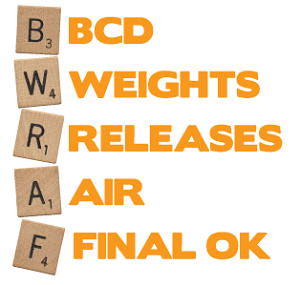Private Scuba › Diving › Lessons › Pre Dive Check
PADI Diving BWRAF Check
Buddy teams should run through a dive safety checklist before the buddy team enter the water.
Similar to an airline pilot and co-pilot pre-flight check, performing the predive safety check will help the diving partners identify missing scuba gear or faulty equipment.
It takes only a few moments to review and is best done when each diver is wearing the equipment close to the water entry.
Consider it mental preparation for the dive and a last minute check to determine if any gear got broken or misplaced by accident.
BWRAF PRE DIVE SAFETY CHECK
This is a good diving habit to be comfortable with and you can use the popular PADI acronym BWRAF or Begin With Review And Friend to help you to remember the five steps in the correct order.
Step 1. BUOYANCY CONTROL DEVICE (Compensator)
The first step is visually and manually checking the adjustment and working operation of the buoyancy compensator. Confirm yours and your buddy's BC's both fully inflate and fully deflate.
Inspect the low pressure inflator connection and the tank band connection. Examine the dump valve pull strings for entanglement and then partially inflate your BCD ready for the water entry.
 Step 2. WEIGHTS
Step 2. WEIGHTS
Step number two is to check for proper weighting. Confirm that everyone has the correct weight system and weight belts and setup for a right hand release.
Make sure the quick release system is working properly with inserted weight pockets for any divers with integrated weight systems. Each buddy team should be familiar with both weight configurations and know how to release them in an emergency.
Step 3. RELEASES
When you get to step three you should familiarize yourself with your buddy's releases and check that all releases and belts are snug are secure. Pay close attention to the tightly closed tank bands which often loosen slightly when they get wet.
Step 4. AIR
Confirm that everyone has ample air supply and all tank valves are fully open. Test all regulators and alternate air sources for proper working and appropriately positioned.
Examine the pressure gauge needle while taking a few regulator breaths to confirm there are no mistakes with accidental tank valve turns.
Step 5. FINAL CHECK
The final and fifth step is a thorough inspection that all gauges are in place and not dangling, there are no twisted hoses, no gear missing, and everyone is ready for the dive.
Scuba Safety Tips |> What Makes a Good Buddy Diver |> Diving Hand Signals Underwater |> Equalization Techniques |